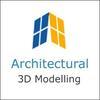In engineering drawing, complex parts are depicted through lines, hidden lines and sections. However, sophistication of parts can lead to very confusing lines in the drawing. This is resolved through sectional view drawing.
Sectional view drawings are useful in presenting information about engineering or mechanical parts in a better model. One of the main reasons why sectional view drawings are used is the level of sophistication or complexity in the normal representation of the parts. Such a representation draws flak as it can turn out to be very confusing.
Sectional view drawings are created through what is called “sectioning.” There are various types of sectioning applied as per the need:
• Full Section
• Half Section
• Offset Section
• Part Section
• Revolved Section
• Removed Section
Each type of section presents one particular data in a crisp and clear form. Engineers need to deal with a lot of mechanical and engineering parts in the drawings. Depending on the part to be focused, different sectioning methods are used to isolate and represent just the section or part which is required for analysis.
When we speak of sectioning, one also has to mention hatching, a relatively finer concept under sectioning. Hatching is the drawing of lines that depict the plan of cutting on the sectioned drawing. Over varied planes or different surfaces, hatching lines are drawn with different direction or spacing. They are usually inclined at a 45-degree angle.
Sectional View Drawing largely forms a part of engineering drawing and mechanical drawing. During the production of such drawings, drafters might be tasked with producing finer details about the working parts.
Sectional view drawings are more or less part of all mechanical and engineering drawing assignments. These produce a finer level of detail which is otherwise unavailable in usual drawings due to confusing lines and depictions.
Different conventions are followed by different engineering drafters while performing sectional view drawings. They are developed over a course of several design processes based on the requirement and the constraints involved.

